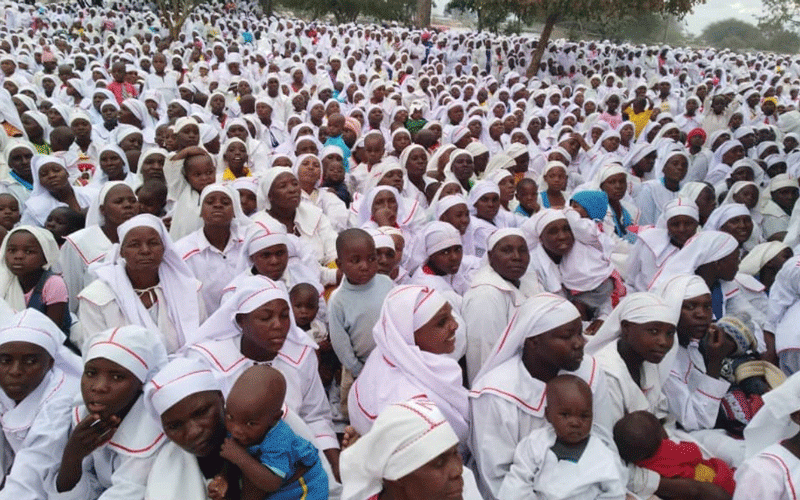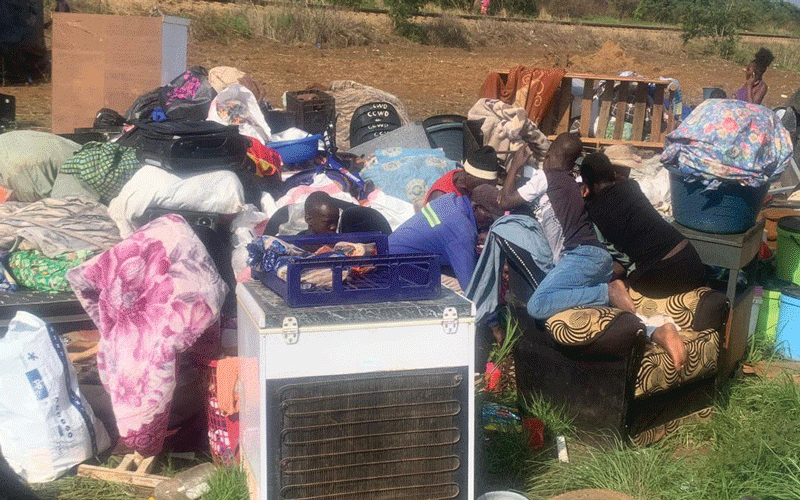
Sparsely populated homesteads and pristine vegetation dominate the view as one drives through Buhera district, Manicaland Province, along the Chivhu-Murambinda highway.
Although the sweltering October heat and traces of parched land trigger a sense of aridity that could justify reports of water challenges in the area, securing the precious liquid is not too hard a task according for some locals.
If the villages, all the way up to Murambinda Growth Point, are not crowded, and there is enough water supplies coupled with good waste management, what then makes Buhera a cholera hotspot?
Cholera is a severe intestinal infection caused by ingesting contaminated food or water.
“I personally blame the Marange apostolic sect members because these cholera outbreaks happen as a result of their church gatherings,” Tadiwa Tererai (18), a local, told The Standard.
At the end of August, the government announced a renewed cholera outbreak in the country with Buhera cited as the epicentre.
As of Friday, Zimbabwe had recorded 115 suspected cholera deaths — 34 confirmed — and 5 303 suspected cholera cases according to the latest situational report from the Health and Child Care ministry, which also indicated that Buhera had the highest number of hospitalised patients as well as new cases.
According to the report, 41 districts across the country have reported the outbreak, with Buhera and Gutu recording the highest numbers.
- Chitungwiza sewer infrastructure collapses
- Chitungwiza sewer infrastructure collapses
- Information key to climate change mitigation: FAO
- Pupil commits suicide over satanism taunt
Keep Reading
Cholera, an infectious disease that causes severe diarrhoea, which can lead to dehydration and death if untreated, is most likely to occur and spread in places with inadequate water treatment, poor sanitation, and inadequate hygiene, reads data from Centre for Diseases Control and Prevention (CDC) —a national public health agency of the United States.
Approximately 10% of the people who get sick with cholera develop severe symptoms such as diarrhoea, vomiting, and leg cramps. In these people, rapid loss of body fluids leads to dehydration and shock such that without quick treatment, death can occur within hours.
“They (Marange church members) recently had one of their gatherings at Marenga and the numbers were so big. It makes it hard for them to maintain cleanliness and general good hygiene,” Tererai said.
Elvis Mazanhi, who lives a stone’s throw away from the Johanne Marange Apostolic Church shrine at Marenga, some 10 kilometres away from Murambinda Growth Point where most cases have been recorded, concurred.
“We have various apostolic churches dotted across the district and I am a member of one, but when the Marange people from different parts of the district and country at large converge they will be too many in one place and such a situation is a health hazard,” says Mazanhi who claims that “mysterious deaths” happen at the shrine whenever there is a church conference.
There were reports in the media that the cholera outbreak started around August 26 at an apostolic church shrine in the area where a spiritual healing session was being held.
The reports further stated that the church forbids its followers from visiting clinics and hospitals in the event of them falling sick.
These revelations would appear to corroborate the allegations that the cholera outbreak could have indeed started at the Marenga shrine in August.
But a caretaker at the shrine disputed the claims.
“Our sanitation and water supplies are in place and fully functional, we have it all here and we follow health protocols to ensure there is cleanliness for the safety of our members,” the caretaker, Samuel Chabuku told The Standard.
Taking this publication on a brief tour of the three boreholes, toilet facilities and worship quarters at the shrine Chabuku added: “Our church is just susceptible to attacks because there are people who do not like the good work we do.
“Some hate that we are “mapostori” so they go around smearing our name.”
The worst cholera outbreak in Zimbabwe’s recent history struck between 2008 and 2009 and claimed more than 4 000 lives and affected close to 100 000 people.
“One death is more than enough,” Health and Child Care minister Douglas Mombeshora said during a recent fact-finding tour in Buhera.
“We are losing lives and I took it upon myself to say we have to go and see what is happening on the ground.
“I was a bit worried with the figures that were coming up during the week because initially we thought we were getting above the situation, but the figures just started increasing.”
For an area supposedly on red alert for the highly contagious disease, it has remained business as usual through the day and night at Murambinda centre.
There are no hand washing facilities anywhere in sight although sources of drinking water are fully functional.
Hordes of worshippers clad in the traditional white garments go there for water and proceed to their different places of worship.
Meanwhile, far from Murambinda Growth Point, the spread of cholera is now fuelled by the non-availability of potable water, proper sanitation facilities as well as, in some instances, lack of basic hygiene at household level, health workers say.
This, coupled with the big regular gatherings of apostolic church congregations across the district, has put the area at high risk of cholera outbreaks.
“We live amongst a lot of Johanne Marange apostolic sect members and they recently had a meeting where they had large crowds gathering together.
“Although we have tried to teach them about hygiene, there is lack of cleanliness still and that is a problem understood by those who do not attend the same church,” said Angeline Sanganai, a health worker at Torevasei and Pasipamire villages.
Interestingly, the government appears to drag its feet towards banning such huge ill-planned congregations, at least during this time of the outbreak.
In fact, officials appear to give a blind eye to the allegations that apostolic sects, particularly Johanne Marange church, have played a major role in the spread of cholera.
Could it be, as Chabuku attests, because of the “special relationship” that the church has with the government and President Emmerson Mnangagwa in particular who has been seen frequently canvassing for votes at the church’s shrines?
“We have heard about religious objectors most of whom do not believe in visiting health facilities, so we are trying to see if we can engage religious leaders to ensure that their followers get medical care when they fall ill,” said Mombeshora.
However, even as this trip was taking place, members of the Johanne Marange sect were conducting a four- day congregation attended by thousands of followers at Bocha, in the same province according to Chabuku.
“We will speak to the religious leaders so that we can come up with a solution to this scourge,” said Manicaland Provincial Affairs and Devolution minister Misheck Mugadza.
"I am going to engage them so that we can educate them about cholera and the importance of seeking health care early to avoid the spread of cholera and unnecessary deaths.”











